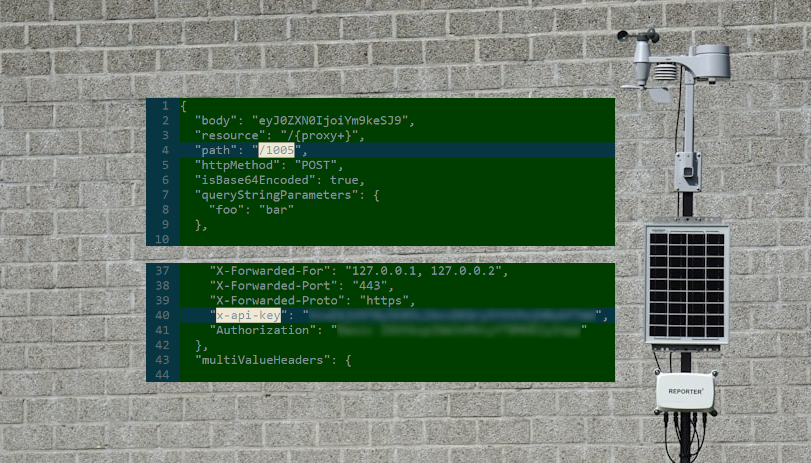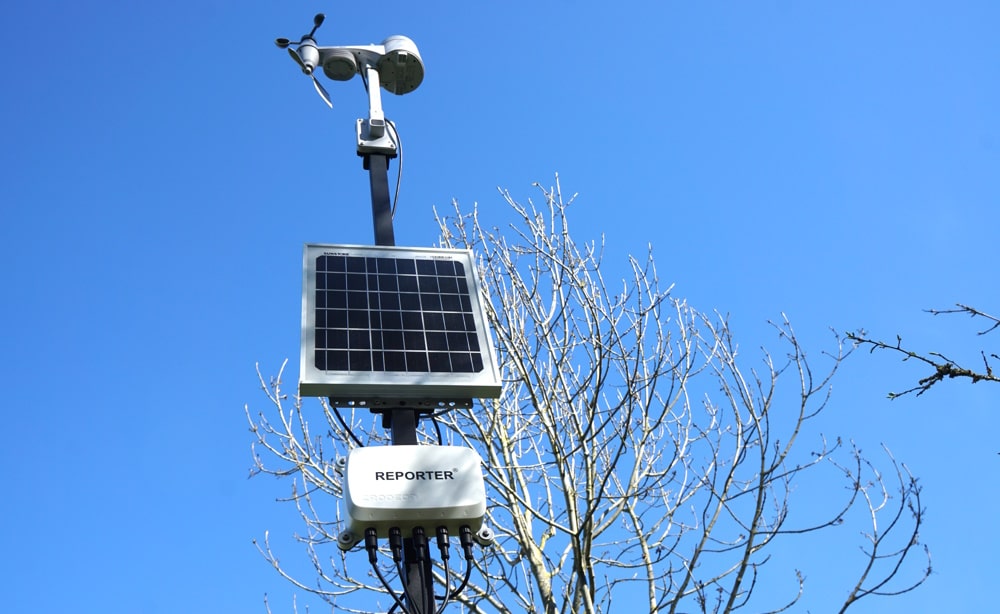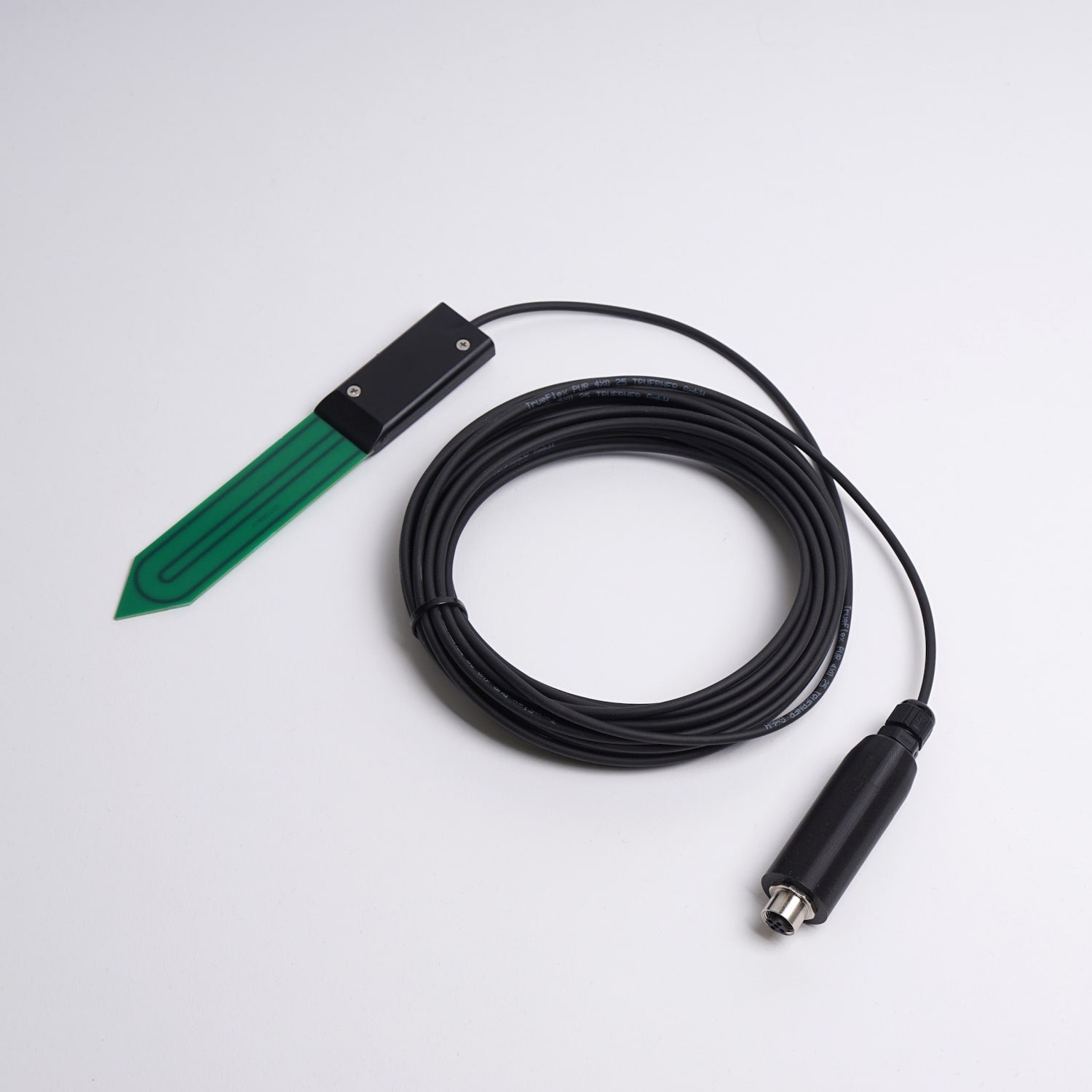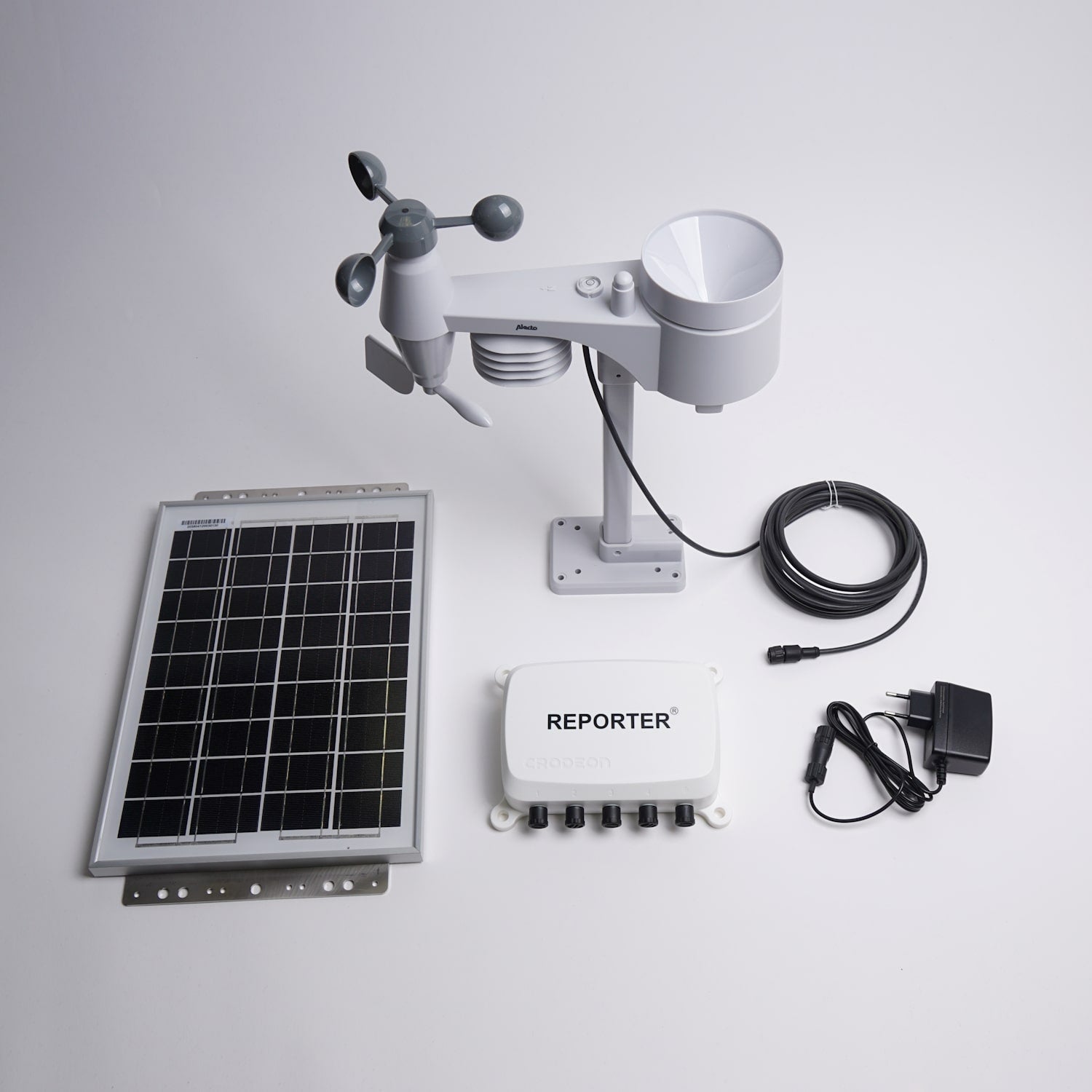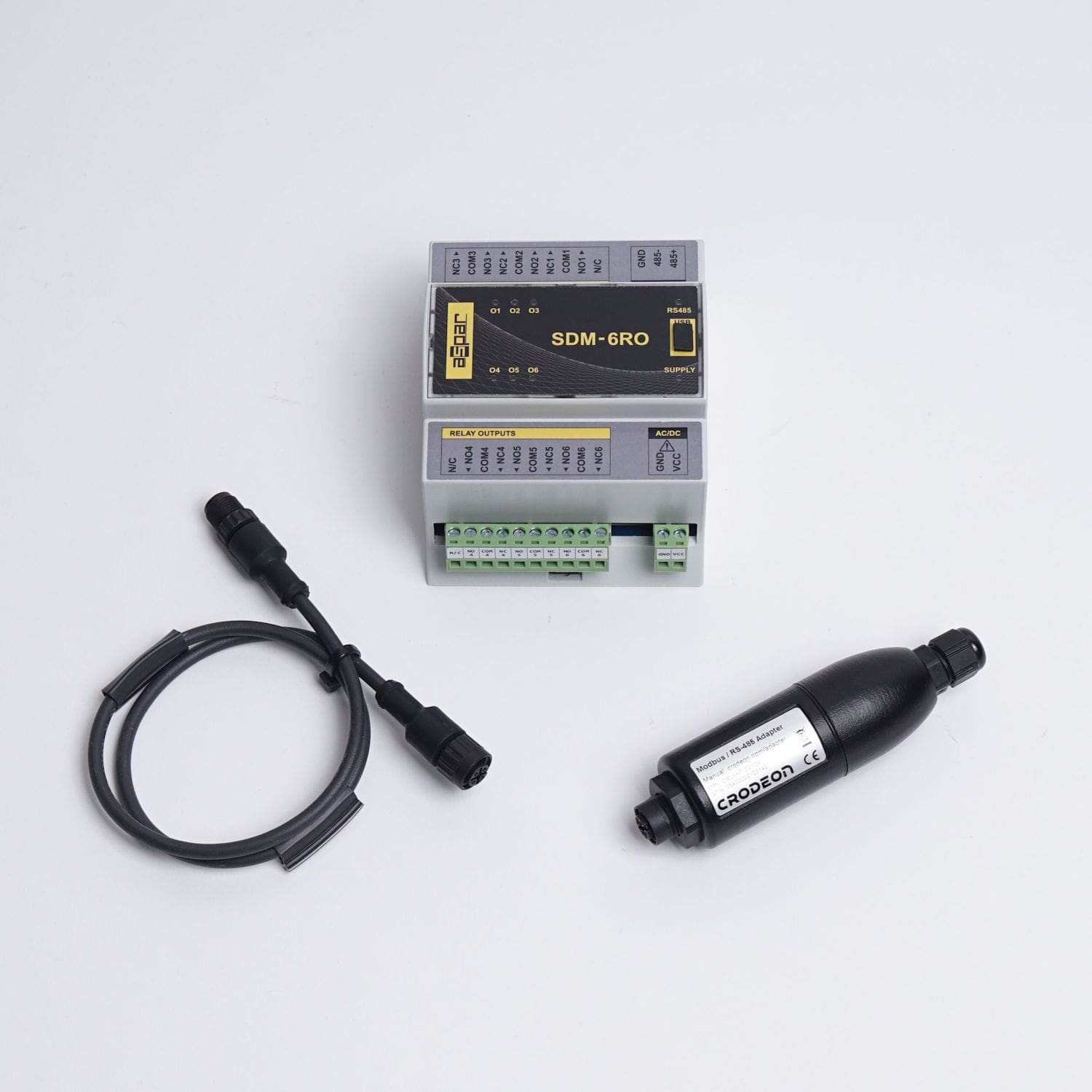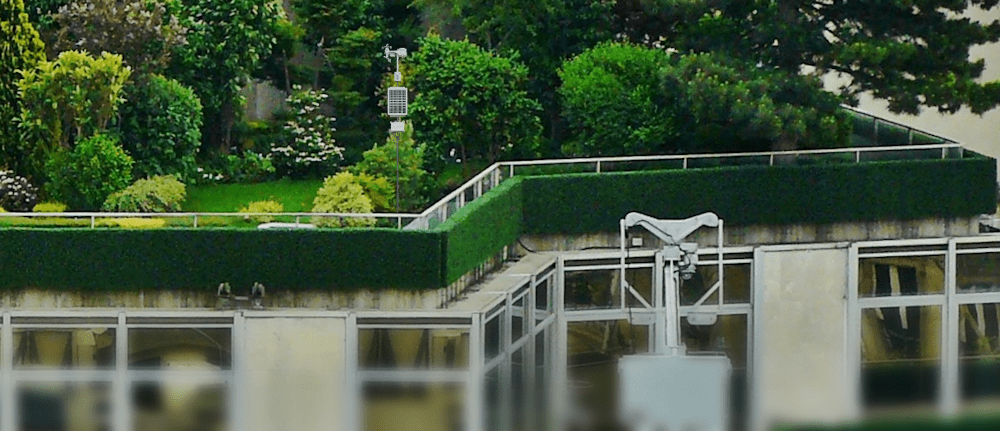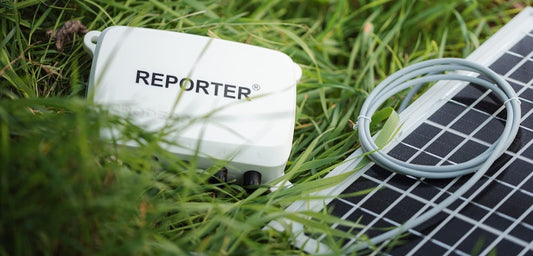Green roof monitoring
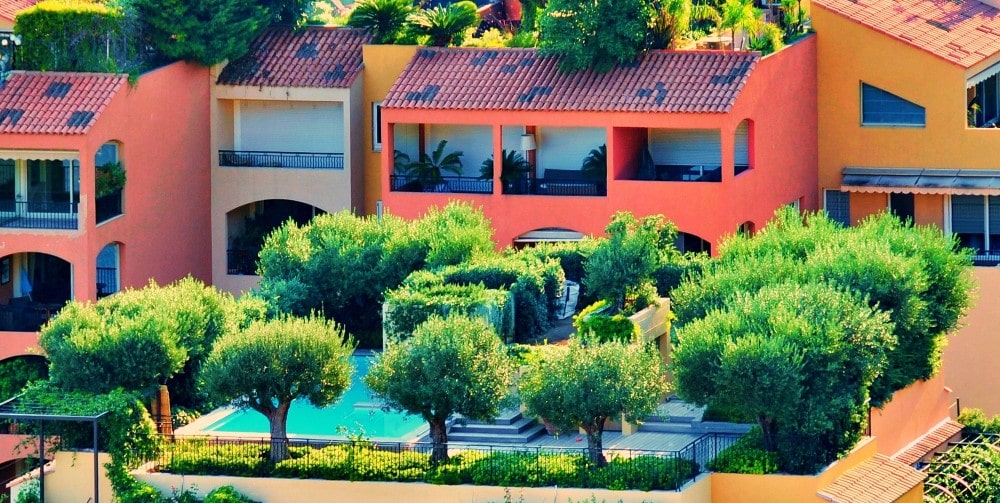
In an era of extended heatwaves and parched spells due to shifting climates, adept green roof monitoring emerges as the ultimate safeguard. Especially for substantial flora like small trees, proper irrigation becomes essential.
Monitoring a planted roof can tell us a lot about the current state of a roof garden but also what aspects of these projects could use improvement in the future. We can collect valuable information while making sure that the plants remain in optimal condition.
Let's embark on a journey of insights as we delve into the significance of remote monitoring. Unveil how Reporter, our sensor module, revolutionises the landscape of your projects, one rooftop at a time!
The advantages of green roof monitoring
Although it might not be necessary for small planted roofs on individual homes, monitoring the green roof of a large office building or governmental structure might be worthwhile.
A green roof monitoring system must contain the following: a fully functional weather station with wind measurements, temperature, relative humidity and rain sensors. Additionally, you will need soil moisture sensors that also measure soil temperature. A pressure sensor or water flow meter can keep an eye on the water pipes leading to your irrigation sprinklers.
For your client
A green roof with small trees and bushes needs a little more help to survive long periods of drought. Sedum too might need help if it hasn't rained for months. To keep a vegetative roof nice to look at it simply needs irrigation. For your client to be able to follow up on the conditions and easily turn on irrigation when needed is a huge plus.

Reporter as your smart green roof monitoring system
At Crodeon we invented a handy module that makes remote monitoring accessible to everyone: Reporter. Reporter is a versatile sensor module that lets you connect up to four plug & play sensors (or a relay output module) per device. You can fully customise it for your project.
For green roof monitoring, we recommend Reporter with the following:
- A complete weather sensor: to monitor the local climate of your roof garden (wind, temperature, RH & rain).
- Two soil moisture sensors that also measure soil temperature: to monitor how moist or wet the substrate is and when the vegetation needs water, but also to track the internal temperature of the green roof.
- A pressure sensor or flow meter: to monitor whether your irrigation system is working as it should.
Reporter sends its real-time data through the cellular network to our cloud platform called the Crodeon Dashboard. The Dashboard is a web application that works 24/7, on any device in your favourite browser. The Dashboard allows you to look at live and recent historical data, older records can easily be downloaded through the export function.
The reliable GSM connection makes Reporter the perfect solution for rooftops where a WiFi connection is impossible. All data can additionally be accessed through the rest API, which you can use to automate different processes.
A small solar panel powers the monitoring system and the internal battery makes sure that nights and power outages are covered. Reporter is sturdy, mobile, autonomous, and water and weatherproof, of course.
Last but not least: Reporter lets you set alarm thresholds. When a threshold is about to be reached Reporter will send an alarm notification to your phone or email. Giving you the opportunity to respond ASAP!

Sustainable irrigation
To conserve water, it is imperative that you closely monitor your green roof's irrigation process and the current weather conditions. Monitoring is easily achieved with a green roof monitoring system like Reporter, with several sensors of your choice.
Soil moisture sensors can communicate whether the substrate is adequately moist. When the substrate is too dry or moist enough, the sensors will notice and your monitoring system will send you an alarm to warn you.
Additionally, the remote monitoring system checks the water flow (through pressure sensor or a water flow meter) to ensure that the irrigation is working correctly. This is particularly important when you are unable to check on your planted roof regularly. Irrigation monitoring is highly essential for roofs that feature larger plants as these are more susceptible to desiccation.
Manual or API-automated
Crodeon's green roof monitoring system comes with a rest API that you can use to integrate into your irrigation software. The data through the API allows your software to automatically adjust water flows.
If you do not have irrigation software you can also manually turn on or turn off your tap to control irrigation on your roof garden, either in person or through the push of a button on your smartphone if you install a relay output module.
1. No premature irrigation
Often irrigation in green roofs is set on a timer. Meaning that during summer the roof gets watered for 10 minutes every night. Which is great, but sometimes unnecessary. This system does not take into account whether it has rained recently or how moist the substrate still is. Essentially this leads to huge amounts of water waste, which is not great. To avoid wasting water it would be advisable to install soil moisture sensors that can monitor your substrate.
Each Reporter has up to 4 connectors, giving you plenty of opportunities to attach different sensors from different locations. Register soil moisture by the tree on a hot day and increase the water flow accordingly or measure soil moisture at the rock garden and stop the water flow if necessary. No plant will ever have to worry about dried-out or rotten roots ever again.
2. Measure precipitation with green roof monitoring
Installing a weather station or another kind of professional rain sensor can optimise your sustainable irrigation even more. Rain usually means that the roof garden does not need any extra irrigation. The weather sensor will register precipitation. Through the system's API and your software, you can set the irrigation to be paused when it's raining. As a result, irrigation will be stopped even earlier than the soil moisture sensor would have registered the downpour. Alternatively, you can set an alarm for when precipitation is registered, giving you the opportunity to manually pause irrigation.
The weather sensor is also perfectly capable of measuring when it rained and how much it rained, so you can make an estimate of how much rain your green roof has absorbed.
3. Track and control irrigation
When tracking and controlling irrigation, there are 3 things you should keep a close eye on:
1. Do my plants need water?
Which is solved by the moisture sensors communicating with your drip system.
2. Does my irrigation actually flow?
Which is solved by installing a flow meter or pressure sensor, so you can follow up live if water is being administered.
3. Do I need to turn my drip system off again?
A relay output module lets you turn on or turn off your irrigation with the simple touch of a button.
Besides, you can measure and monitor the amount of water being put into your roof garden, making sure that no water is being wasted by just flowing down the gutter. When the desired soil moisture levels have been reached, Reporter will send out an alarm notification to warn you about this water being wasted.

Smart green roof monitoring today
So you just constructed this new roof garden and want it to grow to its full potential, ensuring that your client has a wonderful view every day. Happy and healthy plants are key in that view. Make your green roof more sustainable by making irrigation smarter. Reporter is the all-in-one monitoring tool to help you measure and adjust irrigation when needed.
Do you still have questions? Don't hesitate to contact us through the form or send us an email!
FAQ
Can a green roof monitoring system be used for research purposes?
Yes, of course! Reporter is fully customisable to your liking and project. Every project is unique as environmental factors can differ greatly per region, altitude, and building. Urban heat islands also cause the overall temperature in a city to be and remain higher than in more rural environments.
Reporter is mobile and autonomous, meaning that you can use the system to monitor different projects. Monitoring multiple garden roofs for weather and soil measurements can give you better insights into what might be causing problems in vegetation. A larger data set simply gives more reliable results for research related to roof gardens.
Read more about roof climate research:

